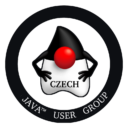Prosincové setkání Pražské Czech Java User Group
proběhne 20.12.2010 od 19 hodin v posluchárně S3 na
Matematicko-fyzikální fakultě Karlovy Univerzity na
Malostranském náměstí 25, Praha 1. Čekají nás dvě
prezentace v češtině Moderní webová aplikace
za méně než hodinu/Lift web framework (Petr Hošek) a programování UI pro Android
aplikace Programatic UI – how to build UI and
avoid acute chevronitis (Pavel
Lahoda). Vstup na akce CZJUGu je zdarma, a
není třeba se předem registrovat. Pokud se chystáte
přijít, dejte nám vědět formou hlasování v anketě na
hlavní strance portálu java.cz.
Moderní webová aplikace za méně než
hodinu/Lift web framework
Lift web framework je jednou z nejpopulárnějších
součástí Scala ekosystému. Díky mnoha inovativním
vlastnostem a použití v projektech jako je foursquare
nebo snapsort nabírá tento webový framework na
popularitě takřka raketovým tempem. Pro mnoho
vývojářů je právě tento webový framework důvodem pro
studium jazyka Scala.
V této prakticky zaměřené přednášce navazující na
předchozí přednášky o jazyce Scala se na tento webový
framework blíže podíváme. Popíšeme si jeho filozofii,
ukážeme si základní koncepty a jejich použití a
především zmíníme výhody, které Lift web framework
přinaší oproti jiným webovým frameworkům. To vše bude
názorně demonstrováno na vývoji webové aplikace
kombinující moderní technologie dominující současnému
webu.
Programatic UI – how to build UI and
avoid acute chevronitis
UI is typically created by declaring its elements
in XML or HTML and hooking them into Java code later.
While both XML and declarative style has its
followers, it also carries its own bag of problems
(such as fragile dependency on String-based bindings,
excessive typing of angle brackets known as
chevronitis and general inflexibility once the layout
gets complicated).
This talk is an introduction to an alternative
approach, which is programmatic instantiation of the
UI. While this sounds complicated and tedious at
first glance, it is not. This is generic technique,
that might be used in any Java-based environment (or
elsewhere), but the talk will focus on two prominent
frameworks : the bulk of the concepts is explained on
Android mobile platform, which is a perfect candidate
: mobile UI is typically quite simple, but faces the
specific set of challenges, and Android is also – by
design – very XML centric, so this talk offers a
„second string“. Another platform mentioned is Google
Widget Toolkit to prove the approach presented in
this talk can be applied in various stages.
Presentation offers graceful introduction for
beginners, as elevant parts of the Android framework
are examined (an anatomy of a ViewGroup), while the
bulk of talk disserts how leverage the power Java
language to create rich, flexible and attractive UI
programatically and do it in effective and
comprehensible way. Contrasts to traditional,
XML-based approach is highlighted, especially in the
problematic areas of the original method. More
advanced topics are also touched, such as automatic
UI generation by introspecting annotated Java object,
but the talk remains within the scope of general,
beginners to intermediate Java developers audience.
The presentation is quite short (within 30 minutes
limit) and has several examples and demos of actual,
working code. In summary : this talk would give you a
food for thought if you intuitively feel there is
something wrong with the declarative UI and its
linking to the Java code, and also prove that Java is
great language even for the front-end coding.
